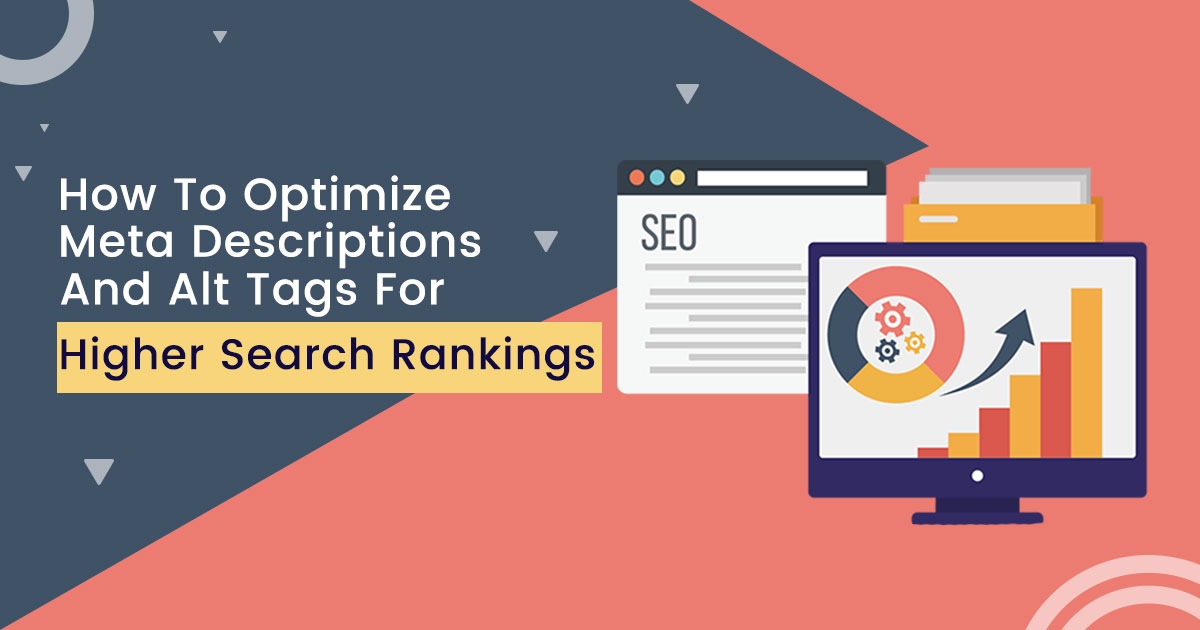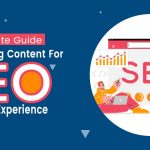How To Optimize Meta Descriptions And Alt Tags For Higher Search Rankings
|
Getting your Trinity Audio player ready...
|
How To Optimize Meta Descriptions And Alt Tags For Higher Search Rankings
In the ever-evolving landscape of digital marketing, the competition to rank higher in search engine results pages (SERPs) is fiercer than ever. Two critical, yet often overlooked, elements in this battle are meta descriptions and alt tags. When optimized correctly, these elements can significantly enhance your website’s visibility, click-through rates (CTR), and ultimately, its ranking on search engines like Google. This blog post will delve into how to effectively optimize meta descriptions and alt tags to achieve higher search rankings.
Understanding Meta Descriptions and Alt Tags
Before diving into optimization strategies, it’s essential to understand what meta descriptions and alt tags are and why they matter.
- Meta Descriptions: A meta description is a brief summary of a webpage’s content. It appears under the page title in search engine results and is intended to provide users with a snapshot of what the page is about. Though meta descriptions don’t directly impact rankings, they influence CTR, which is a ranking factor.
- Alt Tags (Alternative Text): Alt tags are HTML attributes used to describe images on a webpage. These descriptions are vital for accessibility, allowing visually impaired users to understand image content through screen readers. Additionally, search engines use alt text to comprehend the context of images, which can influence rankings, particularly in image searches.
Importance of Optimizing Meta Descriptions
Meta descriptions play a crucial role in attracting users to click on your link rather than a competitor’s. While they may not be a direct ranking factor, Google does consider the relevance and performance of meta descriptions indirectly through CTR. An optimized meta description can:
- Increase CTR: A compelling, relevant meta description can entice users to click on your link, signaling to search engines that your content is valuable.
- Improve User Experience: A clear, informative meta description helps users quickly determine if your content matches their query, reducing bounce rates.
- Boost Brand Perception: Well-crafted meta descriptions that consistently align with your brand’s voice can reinforce brand trust and loyalty.
Best Practices for Optimizing Meta Descriptions
- Keep It Concise: Meta descriptions should ideally be between 150-160 characters. This length ensures your description is fully displayed in search results, preventing important information from being cut off.
- Include Target Keywords: While meta descriptions don’t directly impact SEO, including relevant keywords can make your description more appealing to users and search engines. However, avoid keyword stuffing, as this can make the description sound unnatural and spammy.
- Focus on the User: Craft your meta description with the user in mind. Address their needs, pain points, or what they can expect from your page. For instance, if your page is about “how to bake a cake,” your meta description could be, “Learn how to bake a perfect cake with our step-by-step guide, complete with tips for beginners.”
- Use a Call-to-Action (CTA): Encourage users to take action by incorporating CTAs like “Learn more,” “Discover,” or “Find out how.” This not only engages the reader but also increases the likelihood of a click-through.
- Avoid Duplication: Ensure each page on your site has a unique meta description. Duplicate meta descriptions can confuse search engines and diminish your SEO efforts.

Importance of Optimizing Alt Tags
Alt tags are crucial for both accessibility and SEO. They ensure that all users, including those with visual impairments, can understand the content of your images. From an SEO perspective, alt tags help search engines index your images correctly, which can drive more traffic to your site, particularly from image searches.
Best Practices for Optimizing Alt Tags
- Be Descriptive and Specific: Alt tags should clearly describe the content and purpose of the image. For example, instead of a generic tag like “image1.jpg,” use something like “woman-baking-chocolate-cake.jpg.” This not only helps with SEO but also improves accessibility.
- Incorporate Keywords Naturally: Where relevant, include keywords in your alt tags. However, make sure the keywords fit naturally into the description and accurately describe the image. For example, “Golden Retriever playing in the park” is better than “dog pet park play golden retriever.”
- Keep It Concise: While alt tags should be descriptive, they should also be concise. Aim for a length that adequately describes the image without being overly verbose, typically between 125-150 characters.
- Avoid Keyword Stuffing: As with meta descriptions, avoid stuffing alt tags with keywords. This practice can be penalized by search engines and create a poor user experience.
- Don’t Neglect Decorative Images: If an image is purely decorative and doesn’t add context to the content, use a null alt attribute (alt=””). This tells screen readers to skip the image, which improves the accessibility of your page.
The Impact of Optimization on Search Rankings
When meta descriptions and alt tags are optimized effectively, they contribute to a better user experience and improved SEO outcomes. Here’s how:
- Enhanced User Engagement: Well-crafted meta descriptions and alt tags make your content more engaging, leading to higher CTRs and lower bounce rates. Search engines interpret this as a sign of high-quality content, which can improve your rankings.
- Improved Accessibility: Alt tags improve the accessibility of your website, making it usable for a broader audience, including those with disabilities. Websites that prioritize accessibility may also be favored by search engines.
- Increased Visibility in Image Searches: Optimized alt tags can improve your images’ rankings in image search results, driving additional traffic to your site.
- Stronger SEO Signals: While meta descriptions and alt tags are just pieces of the SEO puzzle, their optimization contributes to the overall strength of your website’s SEO. They work in conjunction with other factors like content quality, backlinks, and technical SEO to improve your site’s performance.
Optimizing meta descriptions and alt tags is an essential part of any comprehensive SEO strategy. Though these elements might seem minor, their impact on user experience, CTR, and search rankings is significant. By following best practices—keeping meta descriptions concise, user-focused, and keyword-rich, and ensuring alt tags are descriptive, specific, and accessible—you can enhance your website’s visibility and performance in search engines. In a digital landscape where every detail counts, taking the time to optimize these elements can give you a competitive edge.

 Previous Post
Previous Post Next Post
Next Post